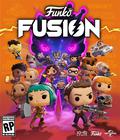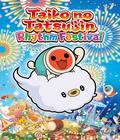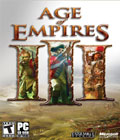Genre: Real-Time Strategy
Publisher: Microsoft
Developer: Ensemble Studios
Release Date: October 25, 2005
Buy 'AGE OF EMPIRES III': PC
Back in 1997, I picked up a game called Age of Empires, not really expecting that much, as I'd never heard of the title. Twelve hours later, I was hooked and was building up my Yamato cavalries to crush any who would oppose me. Fast forward eight years, and we come to the third installment of the series, Age of Empires III. The sequel, Age of Empires II: Age of Kings, had put players in control of a medieval army while maintaining the same strong gameplay mechanics as the original. At the outset of AoE3, my only question was whether the gameplay would be similar to that of its predecessors. Thankfully, the answer is more or less yes.
For newcomers to the series, AoE3 starts with a tutorial which will help you become acquainted with the basics, which is nice because even during the first campaign, you are thrown into the thick of the action. Speaking of the campaign mode, there has been a shift from earlier designs. Previously, you could select from a map which civilization's story you would play through, but now the setup is very reminiscent of Warcraft 3. Upon entering campaign mode, you see three campaigns in the selection screen, but the last two are not executable, as they must be played sequentially. The story is about the Black family, and you start off with Morgan Black, a knight of St. John who must defend against the Spanish in the new world. Secondly, you play as his grandson John as you take part in the Seven Years' War with some Native American allies, and lastly, you take control of John's granddaughter Amelia as the owner of a railroad company expanding westward.
The campaign mode is fleshed out well with a solid story and a large diversity of mission types that keep you defending or attacking against your opponents (as well as other objectives, like allying with Native Americans or taking control of certain trade routes). It does, however, pale in comparison to many such modes in different titles (such as Warcraft 3 or Starcraft) simply in depth of story. Thankfully, there is a thread that ties all of the stories together that you will discover while playing. Like previous titles in the series, you can also fight a single-player skirmish against computer opponents to get a quick fix.
Many consider the multiplayer mdoe to be the meat of AoE3. Logging on to the ESO 2 (Ensemble's online matchmaking service) takes little more then clicking on the multiplayer button at the main menu and creating an account. I never once had to minimize the screen to take part in any aspect of the multiplayer component. Once logged in, you can build your home city (more on that in a bit), change your avatar, make or join a clan, or take a look at your stats from previous conquests or defeats. Finding a game requires clicking on a tab and selecting a game to join from a list, or you can join a quick game best suited to criteria you've entered, like home city level.
There are a large variety of maps to play, and when you create your home city, you differentiate whether you want to solely skirmish or play deathmatch games, wherein a large amount of starting resources is available. You can get to know the different maps and where the goodies are, but the differing strategies of your human opponents keep things from getting boring.
There are eight civilizations including the Russians, Ottomans, British, French, German, Dutch, Portugese, and Spanish, each with unique strengths. For example, the Russians, my preferred civilization, can build villagers three at a time, which requires more resources but actually saves a bit in the long run, and they also have the ability to produce Stretlets who train fairly quickly and 10 at a time, and these are just a couple of their strengths. This makes the Russians rather ideal at rushing, even though the Stretlets are comparatively weak to other units. Finding the strengths and weaknesses of each civilization is one of the core concepts of being successful in any conflict.
As gameplay progresses, you advance through "ages" that require a certain amount of resources, but these upgrades unlock new units, buildings, and research opportunities. In the first age, the units are very similar to the ones in AoE2, such as the crossbowmen, but soon you will be fielding soldiers with muskets and cannons after an age advance. Certain units are better at fighting other units, but are also weaker against others. An example is that musketeers are good against cavalry but susceptible to skirmishers and artillery. Finding a good balance of units to counter your opponent is very important and much more conducive to victory than simple pumping out many of the same units. The different buildings produce your soldiers; for example, artilleries produce cannons and grenadiers, while stables produce military units.
Naval combat makes a return to AoE3, but sadly, it is merely used as support unless absolutely necessary. One of the problems I have with many RTS titles is that naval combat seems like an afterthought, when it was really one of the most important elements to fighting throughout history. You can also create fishing boats to supplement your food supply if need be.
Your units can be upgraded in their respective buildings during certain ages to increase their power, and when they are upgraded, their appearance changes slightly, which is a nice touch. Certain other buildings increase their might with upgrades like better armor for infantry or better attack for your cavalry.
This time around, there are some implements not seen in previous iterations, which include home cities, trading posts, and Native American settlements.
Home cities account for a large amount of customization to a player's strategy and a feeling of continuity across matches. When you select your civilization, it comes with a unique home city, such as Paris for the French. You can, of course, rename your city and your "champion" unit that comes with it, units which are stronger than normal ones, usually making for excellent scouts. They can also gather treasures scattered about the landscape that are sometimes protected by anything from polar bears to pirates that must be defeated before reaping the rewards. These rewards are usually a small amount of resources or even a unit, like a settler.
The home city brings with it your "deck" of cards that are used in every game. Basically, whenever you level up your city by doing things like harvesting resources or killing your enemy, you receive the chance to unlock a new card that can then be added to your deck. There is a large diversity in even the first age cards; my home city, for example, let me choose from a bundle of 300 food, an upgrade to my mills, or an upgrade to my settler. This was with my level-three city at the time, which had only unlocked a few cards, so when you reach the maximum level of 60, the number of different deck constructions is remarkable. Certain cards are not able to be unlocked until your city reaches a predetermined level but are very powerful when they are finally put into play. Another aspect of the home city is the upgrades you get with every level that do not affect gameplay but help make your home city look even more personal. These additions include different people like jugglers and merchants, or banners and carts to decorate the streets. My personal favorite was the entertainer who walks around blowing huge plumes of fire like a circus performer.
While playing AoE3, you keep an eye on the experience bar, which is filled up by the amount of experience that you gain in skirmishes and trading posts. When the experience bar is full, you gain a new shipment; you can choose to accumulate shipments and pick them all up in one fell swoop or collect them as they come in. In either case, you click on the button beside the experience bar with your civilization's flag to switch back and forth to your home city and select the shipment. The shipments do not come instantly, but the wait isn't significantly long.
Trading posts are another new addition that can give you a leg up on the competition. Built by your villager units or your champion, trading posts generate experience for you when first constructed. If you upgrade to a stagecoach later on, then you can select which resource it generates for you (food, wood, coin, or experience). The trading posts can only be built in certain spots along a trade route that are usually fought over viciously. You can also see the stagecoaches, or even trains later on, make their way along the route delivering the goods, which is a nice graphical embellishment.
Native American settlements can be found scattered about the map, and if you build a trading post in the settlement, they will ally with you, allowing you to produce special Native American units from the trading post. These units make a nice addition to any army and are especially good at early raids against neighbors. The Native Americans are never hostile towards anyone and simply sit there docile until someone builds a trading post to ally with them. The settlement can never be destroyed, although ownership can change hands with the destruction of an enemy's trading post and the implementation of your own.
The graphics are impressive, to say the least. You can watch your musketeers send a volley shot toward your enemies and see small puffs of smoke as they do, or even zoom in to the ground level and watch the fighting unfold at a more personal level. The wildlife and environments are well-rendered and have a very natural feel to them, making you feel like your army is in the wild and not just on a map. The water effects are also amazing to see, as waves lap at the shore and your boats slice through the waters. There are some glitches, such as when you are steering a cluster of boats and some of them, apparently able to become intangible at will, slice through nearby vessels.
A new physics engine is introduced in AoE3, but really does not overly affect the game, other than helping to make the graphics more impressive. Buildings start to crumble and lose pieces when pounded by attackers, and cannonballs continue rolling after being shot. This is a very novel addition, but nothing quite compares to slicing through a few trees and destroying a group of infantry with one cannon shot, leaving behind only corpses and felled trees.
The quality of the sound in AoE3 is good, with musical scores setting an excellent background to the missions. The voice acting in campaign mode and the taunts you sometimes receive from your enemy are also very superb and maintain the feel. The various sounds, from the ambience to the crack of a musket, are also very wonderful.
 Overall, Age of Empires III is a must-have for anyone fond of the series or RTS gaming in general. The new additions do much to add new depths of strategy, and hopefully the next installment in the series will do even more. The graphics are impressive, and the solid gameplay from previous installments has carried over well. I'm glad the developers didn't radically change the game or try to reinvent it in a large way, as the core gameplay is what initially attracted me to the series and keeps me coming back. With only a few minor quibbles, such as the small role of navy and sometimes lackluster story in campaign mode, I give my full approval to AoE3.
Overall, Age of Empires III is a must-have for anyone fond of the series or RTS gaming in general. The new additions do much to add new depths of strategy, and hopefully the next installment in the series will do even more. The graphics are impressive, and the solid gameplay from previous installments has carried over well. I'm glad the developers didn't radically change the game or try to reinvent it in a large way, as the core gameplay is what initially attracted me to the series and keeps me coming back. With only a few minor quibbles, such as the small role of navy and sometimes lackluster story in campaign mode, I give my full approval to AoE3.
Score: 9.3/10
More articles about Age of Empires III











 Age of Empires III is set in 1500 A.D. and chronicles the Age of Discovery that started around the time that Columbus discovered the new world. The single player campaign follows American history up through 1850, and in multiplayer mode, you'll be able to choose from among eight different civilizations, and there will include free-for-all and team-vs-team matches for up to eight players.
Age of Empires III is set in 1500 A.D. and chronicles the Age of Discovery that started around the time that Columbus discovered the new world. The single player campaign follows American history up through 1850, and in multiplayer mode, you'll be able to choose from among eight different civilizations, and there will include free-for-all and team-vs-team matches for up to eight players.


















































